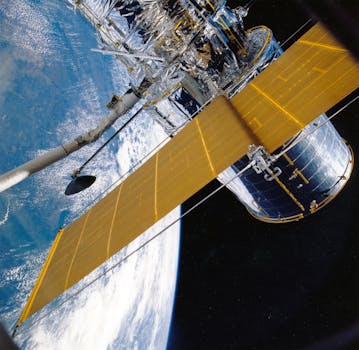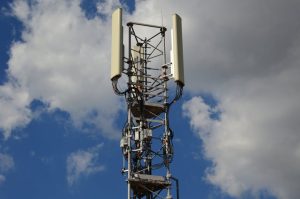Connecting the Globe: The Impact of Orbital Technology on Global Communication

Orbital technology has become a crucial component of modern global communication, enabling people to connect with each other from anywhere in the world. The impact of orbital technology on global communication has been significant, with satellite internet and other orbital-based communication systems transforming the way we communicate, conduct business, and access information. Orbital technology refers to the use of satellites and other spacecraft to facilitate communication, navigation, and other applications.
The use of orbital technology in global communication has several benefits, including increased accessibility, improved reliability, and enhanced speed. Satellite internet, for example, can provide connectivity to remote and underserved areas, where traditional terrestrial infrastructure is lacking. This has enabled people in these areas to access the internet, communicate with others, and participate in the global economy. Moreover, orbital technology has improved the reliability of global communication, as satellite-based systems are less prone to outages and disruptions compared to terrestrial-based systems.
One of the key advantages of orbital technology is its ability to provide global coverage, enabling communication between different parts of the world. This has been particularly important for international businesses, governments, and organizations, which require reliable and secure communication systems to operate effectively. Orbital technology has also enabled the development of new applications and services, such as satellite-based navigation, remote sensing, and earth observation. These applications have numerous benefits, including improved weather forecasting, natural disaster management, and environmental monitoring.
History of Orbital Technology
The history of orbital technology dates back to the 1950s, when the first artificial satellites were launched into space. The Soviet Union launched Sputnik 1, the first artificial satellite, in 1957, followed by the United States, which launched Explorer 1 in 1958. These early satellites were used for scientific research and experimentation, but they paved the way for the development of modern orbital technology. The first commercial satellite, Intelsat 1, was launched in 1965, and it marked the beginning of the modern satellite communications industry.
Since then, orbital technology has evolved significantly, with advances in materials, propulsion systems, and electronics. The development of new satellite technologies, such as geostationary satellites, low-earth orbit satellites, and medium-earth orbit satellites, has enabled a wide range of applications, including television broadcasting, mobile communications, and internet connectivity. The launch of the first GPS satellite in 1978 marked a significant milestone in the development of orbital technology, enabling accurate navigation and timing signals to be transmitted to users around the world.
Benefits and Challenges of Orbital Technology
Orbital technology has numerous benefits, including increased accessibility, improved reliability, and enhanced speed. However, there are also challenges associated with the use of orbital technology, including high costs, limited bandwidth, and regulatory issues. The cost of launching and operating satellites is significant, and this can make orbital technology inaccessible to some users. Additionally, the limited bandwidth available on satellites can make it difficult to support high-speed applications, such as video streaming and online gaming.
Despite these challenges, orbital technology continues to play a vital role in global communication, and its importance is likely to grow in the future. The development of new satellite technologies, such as reusable launch vehicles and small satellites, is helping to reduce the cost of access to space and increase the availability of bandwidth. Additionally, the growth of new applications, such as satellite-based internet of things (IoT) and satellite-based 5G networks, is likely to drive demand for orbital technology and promote further innovation.
Conclusion
In conclusion, orbital technology has had a profound impact on global communication, enabling faster and more reliable connectivity across the globe. The benefits of orbital technology, including increased accessibility, improved reliability, and enhanced speed, have transformed the way we communicate, conduct business, and access information. While there are challenges associated with the use of orbital technology, its importance is likely to grow in the future, driven by advances in technology, growing demand for bandwidth, and the development of new applications.
As the world becomes increasingly interconnected, the role of orbital technology in facilitating global communication will continue to grow. The development of new satellite technologies, such as reusable launch vehicles and small satellites, will help to reduce the cost of access to space and increase the availability of bandwidth. Additionally, the growth of new applications, such as satellite-based IoT and satellite-based 5G networks, will drive demand for orbital technology and promote further innovation. As we look to the future, it is clear that orbital technology will play a vital role in shaping the global communication landscape.



